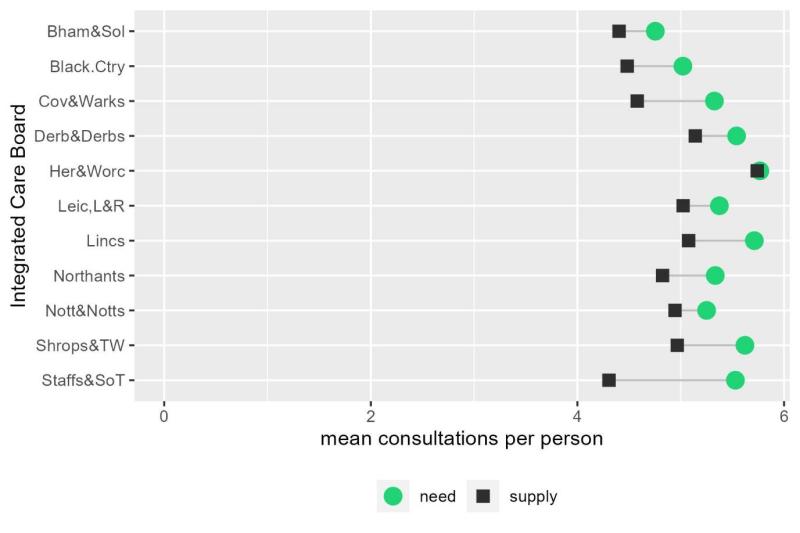The gap between need and supply of GP practice consultations
This is the second in a series of three analyses of GP practice service provision. In the previous paper in this series, we showed that GP consultation rates, the average number of consultations per person, increased between 1995 and 2012, before falling steadily to 2019. Trends beyond this point become more difficult to interpret and the available evidence is not consistent. This is important contextual information for those keen to address patients’ concerns about access to GP services, but additional insight is needed before a grounded policy response can be settled on. Interpreting trends in supply, would ideally take place alongside data on trends in patients’ needs.
In this paper we seek to answer two related questions.
How have consultation rates changed over time relative to need? Are patients with a given level of need, more or less likely to receive a GP practice consultation now than they were in the past?
and,
If gaps between need and supply of GP consultations exist, do we see any evidence of displaced demand and failure demand elsewhere in the healthcare system?
Our analysis covers the period from 2008 to 2019, and uses the primary care research database, CPRD Gold. Over this period there is close agreement between the various available data sources about trends in consultation rates. Supplementary analysis draws on data from the GP Patient Survey, the Emergency Care Dataset (ECDS) and Hospital Episode Statistics (HES) for admitted patient care.
The final paper in this series considers GP practice productivity, efficiency, and continuity of care.
Key findings
The use of GP practice consultations increases with age and with levels of morbidity. Since 2008, the population has aged and age-specific morbidity levels have increased. This suggests that need for GP practice consultations has grown, whilst the average number of consultations per person has reduced. We estimate that in 2019, a patient was 12.2% less likely to receive a consultation than a patient with similar needs in 2012. An additional 36.6 million consultations (+13.9%) would have been required to meet needs in 2019 as they were in 2012.
Patients are finding it increasingly difficult to contact and make a convenient appointment with their GP practice. It has become more common for patients to use emergency departments and urgent care centres to access care that would normally be delivered by GP practices. Hospital admissions for acute, and to a lesser extent, chronic ambulatory care sensitive conditions, had been rising prior to the pandemic.
Please have a listen to our podcast below:
CC BY-NC-ND 4.0

This work is licensed under a Creative Commons Attribution-NonCommercial-NoDerivatives 4.0 International License.

